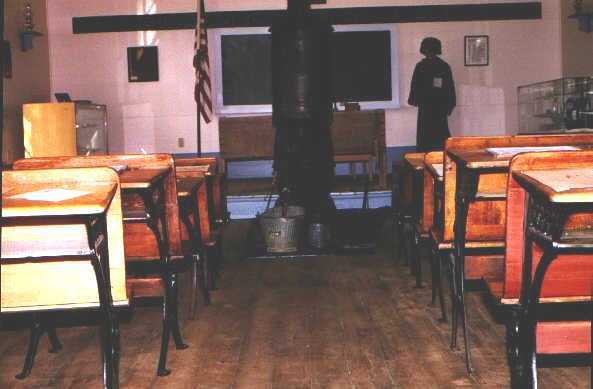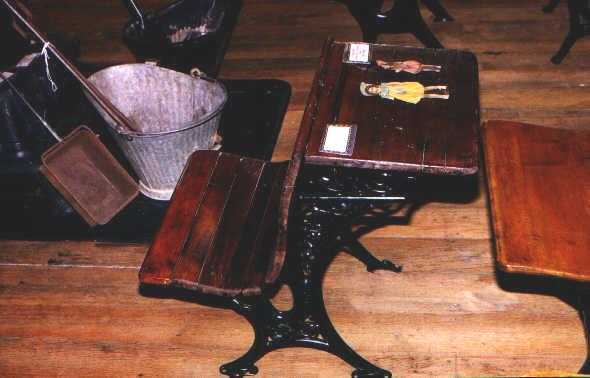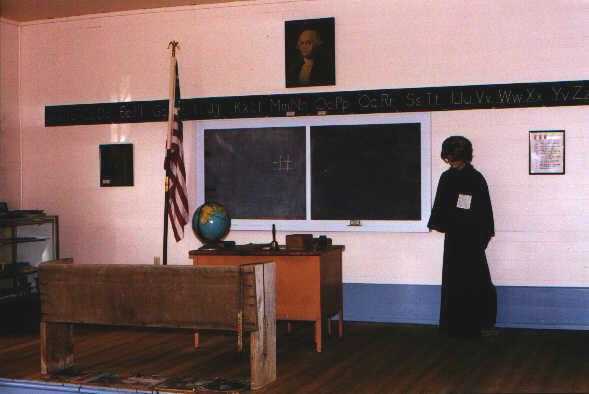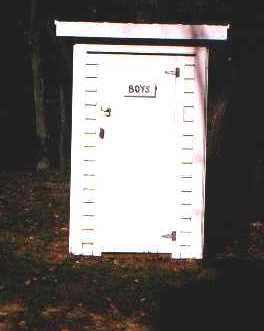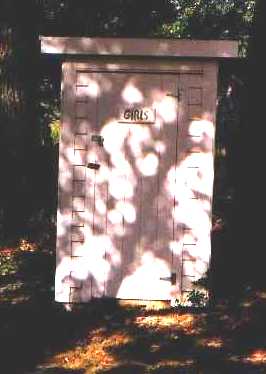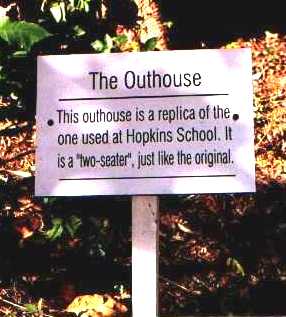ONE ROOM SCHOOL
Click on pictures to view larger image
The above pictures are from the only remaining one room school in Clinton County, KY. The school has been restored to show what school was like during the one room school days.
EARLY EDUCATION IN AMERICA, 1620-1776.
The early colonists patterned their schools on those they had known in Europe. No colonial government conducted a system of free public education, but all New England colonies except Rhode Island had some free schools maintained in part by public funds. Apprentice training for a vocation was common to all the coloniesIn New England, the Puritans believed local government should see to it that all children learned to read the Bible and thus defeat the "Old Deluder, " Satan. With the colonists grouped in towns or large settlements, it was easy to organize schools. Each town consisted of a village and rural area of from 20 to 40 square miles.) Massachusetts laws of 1642 and 1647 provided that every parent be responsible for having his children learn to read, and that every town of 50 families must appoint a teacher of reading and writing.
There were various kinds of schools. In a dame school a woman taught the neighbors children for a fee. In a town school, the community hired the teacher, parents paying tuition or a tax. The Latin grammar school taught boys Latin and Greek to prepare them for college (which did not admit girls). Harvard and eight other colleges--mainly for training clergymen--were founded before the Revolution. Boys of some wealthy families were sent to Europe for higher education.
Under Dutch rule, New York had free elementary town schools controlled by the church. These were followed, after the English took over New York, by charity schools for the poor, conducted by the Anglican Church. Children of parents with means went to private schools. Pennsylvania, with no single controlling church, had a variety of church and private schools. Private schools often took a few pupils on a charity basis. In northeastern Pennsylvania there were schools similar to New England's town school.
RISE OF AMERICAN PUBLIC EDUCATION, 1776-1860.
The founding fathers believed everyone should have a good education, but they feared the tyranny of a central authority. For this reason they left control of schools to individual states, making no mention of education in the Constitution. In 1787 Congress passed an ordinance providing for distribution of public federal lands to encourage education.Since many communities were isolated, the states left actual control of schools to local government units. As families moved into outlying parts of northern town new villages or settlements sprang up. They came to be known as districts. Many children lived too far to attend the town school, and, in time, districts set up their own schools--the birth of the one-room school.
- Snow One Room School Picture.
- Ida One Room School Picture. The last person on right right, second row from the front, is my father James Floyd Stearns.
MY EXPERIENCE IN A ONE-ROOM SCHOOL:
The experience of going to school in a one-room school in Kentucky is something that I will remember and cherish forever. I started to school at the age of five years old in the year of 1939. The school that I attended was Snow School in Clinton County, Kentucky. At that time one teacher taught nine grades--primer through 8th. Upon graduating from the 8th grade, the rural schools students would have to take an entrance examination to see if they qualified for high school.The Mother Hen: The teachers that taught in the one room, rural schools were very special people. During the winter months they would get to the school early to get a fire started in the potbelly stove so the building would be warm for the students. On many occasions they would prepare a hot, noon meal on top of the stove, usually consisting of soup or stew of some kind. They took care of their students like a new mother hen would care for her newly hatched chicks--always looking out for their health and welfare. I like to consider that they taught the five "R's" instead of the traditional three--the last two being respect and responsibility. Events such as pie suppers were organized to raise money for special events or for the purchase of special supplies. The pie suppers were usually a success because the ladies would bake the pies and the gentlemen would bid on the pie belonging to their favorite lady. Whoever bought the pie would get to eat it with their favorite girl.
Assigned Duties: Drinking water was obtained from a well on the school ground or carried from a farmhouse close by. Each student brought his own drinking cup. The older students were given the responsibility of bringing in water, carrying in coal or wood for the stove. The younger students would be given responsibilities according to their size and gender such as cleaning the black board (chalkboard), taking the erasers outside for dusting plus other duties that they were capable of doing.
Respect and the Enforcer: Most children during those days were taught to respect others and their property. Some or one of the kids would get unruly from time to time and out would come the enforcer. The enforcer was always hiding behind the door or under the teachers' desk and when called upon would appear and yield the proper amount of discipline according to the degree of lack of respect.

